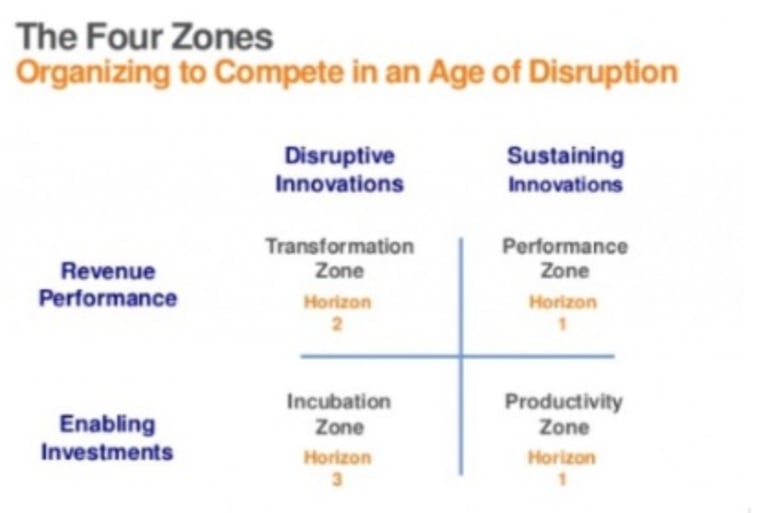Driving Business Innovation Through Infrastructure
Innovation is hard when you are an IT leader... Here is a framework I leveraged
John Spiegel
4/6/20233 min read


"I think we're entering a golden era of infrastructure, coming to life in ways unimagined even five years ago,"
Martin Casado – InterOp Keynote 2016
The Challenge
We are at the doorstep to 2022 and many of the infrastructure leaders I talk with daily are finding it hard to up the pace in the race to incorporate innovation into their technology estates. While many have adopted “Cloud”, automation and similar technologies, they still struggle with the basics: networking, security, and platforms. Much of the approaches used today were common in the pre-Cloud era: WANs based on MPLS, remote access systems built on protocols such as IPSec, legacy firewalls and monolithic platforms.
Although these core technologies are useful as the basic building blocks of enterprise infrastructure, I would argue in many cases there are better alternatives. So why is it these new approaches are not more widely adopted? Often, it comes down to this resource - time! The infrastructure leader lives in a vice between two worlds. From the top, the senior leadership of the business is pushing to deliver on projects which will generate new revenue for the company. From the bottom, the forces exerting upwards are to maintain IT systems, so revenue is not lost. It’s a pressure cooker, to say the least. The result is the infrastructure leader has only limited, if any time, to explore new approaches to their infrastructure challenges.
So, how can the infrastructure leader of today overcome this situation and take advantage of the “golden era of Infrastructure”? Here are three approaches I’ve used successfully.
Three Approaches
Classify
Incorporate product life cycle management. Every system or tool you use in your technology estate has a birth, life and death. The method I used was Geoffrey Moore’s “Four Zones”. I placed every critical infrastructure system or tool into one of these four zones.
For example, if your enterprise remote access is based on an IPSec gateway, it would be placed in “horizon 1”. The technology is acceptable; but is not something which will drive revenue or reduce the risk of lost revenue. The problem is, over the past 18 months, the world has changed and the remote access system in horizon 1 investment now limits business growth and worse, puts revenues at risk. What could the infrastructure leader have done to be ready for this challenge? Start by thinking about your Horizon 2 and 3 opportunities. How do you do this?
Network
A good first step is to engage your peers in the industry. Network at a local IT conference. For those in leadership positions, look into attending a Society of Information Managers conference. Many are holding virtual meetings these days. While the topics may not be directly related to infrastructure, you will expand your network and hopefully learn about new topics and technologies which will help you to consider new approaches. DevOps Days or similar conferences are another good option. There are a lot of new technologies being discussed along with leadership and culture conversations. For senior leaders, virtual CIO/CISO forums are being held. Get out there and network. Look for new ideas.
The IT Sherpa
Next, search out what I call an IT Sherpa. Infrastructure leaders have only limited bandwidth to investigate new technologies. If you ever considered climbing Mt Everest, you would not undertake the endeavor alone. Having someone who has been there, can set the ropes and carry food and oxygen, can be invaluable (and may save your life). The IT Sherpa helps the infrastructure leader find opportunities for horizon 2 and 3. While a busy Infrastructure leader may only have time to investigate 1 or 2 “disruptive” technologies/vendors, the IT Sherpa is exposed to them daily. They have experience in the field. It is highly likely the technology/vendor the IT Sherpa is bringing to you, has personal and up-close experience in utilizing the technology/vendor and may have deployed in production. They know the path; where the pitfalls are; and can recommend the best route to navigate you to horizon 2. The key here is to find a Sherpa you can trust. I recommend taking time to interview a few before partnering with your Sherpa. Note – I’ve also seen these resources called “trusted advisors” and “disruptive technology hunters” or “tech scouts”.
Putting It Together
Once you’ve found the IT Sherpa, start reviewing your technologies and tools in horizon 1. Can you improve on them? Are they a risk to future and current revenue? If so, start working with your Sherpa and peers to investigate potential opportunities for improvement. If one looks promising, dive in further; and consider an incubation program. This could be a technology deep dive or a limited POC. Key item, make sure to engage with your team. Clear time for your team to be part of your program (as they are busy too; but also, hungry to learn about new technologies).


